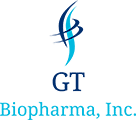预约演示
更新于:2025-05-07
HER2 x IL-15
更新于:2025-05-07
关联
1
项与 HER2 x IL-15 相关的药物作用机制 HER2拮抗剂 [+3] |
非在研适应症- |
最高研发阶段临床前 |
首次获批国家/地区- |
首次获批日期1800-01-20 |
100 项与 HER2 x IL-15 相关的临床结果
登录后查看更多信息
100 项与 HER2 x IL-15 相关的转化医学
登录后查看更多信息
0 项与 HER2 x IL-15 相关的专利(医药)
登录后查看更多信息
28
项与 HER2 x IL-15 相关的文献(医药)2025-03-01·Journal for ImmunoTherapy of Cancer
Selective activation of interleukin-2/interleukin-15 receptor signaling in tumor microenvironment using paired bispecific antibodies
Article
作者: Fischer, Nicolas ; Shang, Limin ; Viandier, Alizée ; Calloud, Sebastien ; Montorfani, Julien ; Chatel, Laurence ; Ferlin, Walter ; Lesnier, Adeline ; Daubeuf, Bruno ; Nouveau, Lise ; Malinge, Pauline ; Hatterer, Eric ; Jandus, Camilla ; Masternak, Krzysztof
2024-11-01·Chemosphere
Deciphering the toxicity of polyhexamethylene guanidine phosphate in lung carcinogenesis: Mutational profiles and molecular mechanisms
Article
作者: Park, Su A ; Lim, Jungyun ; Baek, Yong-Wook ; Lee, Ju-Han ; Kim, Je Hyeong ; Park, Yoon Hee ; Kim, Jonghoon ; Park, Eun-Kee ; Jeong, Sang Hoon ; Lee, Hyejin ; Kim, Young-Hee ; Lee, Hong ; Kim, Jaeyoung ; Lee, Ji Yoon ; Choi, Jin Young ; Sa, Jason K ; Nam, Yoon Jeong ; Lee, Yu-Seon ; Kim, Cherry
2024-09-04·Molecular Cancer Therapeutics
IL-15/IL-15Rα-Fc-Fusion Protein XmAb24306 Potentiates Activity of CD3 Bispecific Antibodies through Enhancing T-Cell Expansion
Article
作者: Liu, Ke ; Li, Ji ; Varma, Rajat ; Slaga, Dionysos ; Junttila, Teemu T. ; Bernett, Matthew J. ; Holder, Patrick G. ; Totpal, Klara ; Chiang, Eugene ; Schubbert, Suzanne ; Avery, Kendra ; Clark, Robyn
136
项与 HER2 x IL-15 相关的新闻(医药)2025-04-23
·小药说药
-01-引言抗体依赖性细胞介导的细胞毒性(ADCC)是一种有效的细胞毒性机制,主要通过自然杀伤(NK)细胞介导。当特异性抗体结合到靶向细胞膜上以后,免疫细胞通过该反应诱导细胞死亡。这是抗体限制和控制感染的几种主要机制之一。抗体和免疫细胞的相互作用通过一个受体家族发生:Fc受体(FcR)。在人类中,IgG的FcR家族(FcγR)由6个受体组成:FcγRI/CD64、FcγRIIa/CD32a、FcγRIIb/CD32b、FcγRIIc/CD32c、FcγRIIIa/CD16a和FcγRIIIb/CD16b,其中CD16a主要负责触发NK细胞介导的ADCC。因此,对CD16a作用机制的了解,有助于我们通过改善单克隆抗体或NK细胞来增强肿瘤免疫治疗药物的ADCC作用。-02-一、ADCC的作用机制NK细胞是一种天然的淋巴细胞,能够非常有效地破坏应激细胞,如病毒感染或肿瘤转化细胞。通常情况下,ADCC效应主要通过结合FCR的抗体激活NK细胞,NK细胞膜上最具特征的FcR就是FcγRIII(CD16),其中NK细胞主要表达CD16a,而CD16b仅限于中性粒细胞。人类NK细胞分为两个主要亚群:CD56bright和CD56dim。CD56brightNK细胞是强有力的细胞因子产生者,但缺乏CD16a;而CD56dim具有高度的细胞毒性,表达D16a。当通过CD16a识别IgG调理的靶点时,NK细胞就会释放不同的细胞毒性分子,从而引发靶细胞的死亡。这种机制依赖于免疫突触的形成和含有穿孔素和颗粒酶的溶解颗粒的脱颗粒。除了脱颗粒外,NK细胞还可以通过将靶死亡受体(如DR4、DR5或Fas)与其死亡受体配体(如FasL和TRAIL)结合来清除靶细胞。-03- 二、CD16a的生物学CD16a是一种跨膜受体,具有短的C-ter胞质尾,并具有两个细胞外Ig样结构域。它的细胞内部分不具有任何信号成分,因此,为了传递信号,它需要两条带有免疫受体酪氨酸基激活基序(ITAM)的信号链。CD16a与IgG的CH2以1:1的方式相互作用,其中CH2上的N297位的 N-聚糖链在这种相互作用中也起着关键作用。因此,不仅氨基酸序列,其聚糖组成都可以极大地影响CD16a对Fc的亲和力,从而影响ADCC的效力。CD16a在其细胞质尾部不具有任何ITAM结构域,因此需要两条含有ITAM结构域的细胞内链串联的帮助,CD3ζ和FcϵRIγ。CD16a结合后,属于Src家族的激酶Lck被激活,并磷酸化CD3ζ和/或FcϵRIγ的ITAM结构域。磷酸化的ITAM允许来自Syk家族的激酶招募和磷酸化,例如Syk和ZAP-70,它们反过来负责后续的信号传导。在它们的底物中,PI3K是高度相关的,因为它将PIP2转化为PIP3,PIP3经PLC-γ处理后释放IP3和DAG。DAG激活PKC家族,这有助于触发脱颗粒。IP3诱导钙从内质网释放,这种钙内流是ADCC触发的主要信号之一,也导致核内NFAT易位,诱导其靶基因的转录。CD16a参与激活的其他途径也有助于ADCC,例如ERK2 MAPK途径。CD16a依赖性NK细胞杀伤后,CD16a迅速下调。CD16a脱落的机制之一是由去整合素和金属蛋白酶17(ADAM17)介导的,后者在NK细胞上表达。ADAM17对CD16a的切割发生在顺式结构中,这意味着表达ADAM17的NK细胞不能在另一个NK细胞上诱导CD16a脱落。激活后CD16a下调的另一个机制是内化,这不仅发生在CD16a上,也发生在其他细胞内信号成分上,如CD3ζ、ZAP-70和Syk。-04-三、提高ADCC作用的策略 细胞因子提高ADCC活性的一个简单方法是用促炎细胞因子刺激NK细胞。NK细胞移植已在多个临床试验中成功进行,例如通过输注细胞因子诱导记忆样(CIML)NK细胞,最常用的细胞因子组合包括IL-12、IL-15和IL-18。CIML NK细胞比传统NK细胞表达更多的IFN-γ,对白血病细胞和原发性急性髓系白血病(AML)母细胞显示出优越的细胞毒性。IL-12会增加NK细胞产生IFN-γ和TNF-α,在一项I/II期临床试验中,西妥昔单抗与IL-12联合应用于无法切除或复发的头颈部鳞状细胞癌患者。与无进展生存期(PFS)小于100天的患者相比, PFS大于100天的患者NK细胞在体外具有更高的ADCC活性。IL-15是NK和CD8+T细胞生存和功能所必需的细胞因子。N-803是一种突变的N72D IL-15超激动剂,在临床前模型和临床试验中显示出增强的NK细胞体外和体内活性。此外,它还增加了NK和CD8+T细胞的数量。抑制ADAM17ADAM17是激活后CD16a下调的主要驱动因素。改善NK细胞ADCC的一种策略是通过靶向ADAM17来防止CD16a脱落。研究发现,对NK细胞中使用CRISPR/Cas9技术敲除ADAM17,显示出更好的IFN-γ生成和体内外ADCC活性。然而,也有研究显示,阻断ADAM17降低了NK细胞的存活率以及CD16a介导的连环杀伤,细胞无法与靶细胞分离,阻碍其运动到另一个靶细胞。总之,ADAM17抑制的益处尚不清楚,结果也有争议。这一策略是否能够成功,有待于一项正在进行的临床试验(NCT04023071)结果,该试验将评估携带不可切割CD16a的iPSC衍生NK细胞在AML和B细胞淋巴瘤中的应用。工程化抗体抗体的Fc部分进行工程化改造,可以增加Fc对CD16a的亲和力,并随后改善ADCC。一些突变非常流行,例如,所谓的GASDALIE,由Fc中的4个替换组成:G236A/S239D/A330L/I332E。该突变显示对CD16a的亲和力显著增加,而CD32b亲和力几乎没有增加。另一个突变称为突变体18(F243L/R292P/Y300L/V305I/P396L),ADCC显著增加。这些突变现已作为抗HER2抗体margetuximab进入临床,并在I期治疗各种HER2阳性癌时显示出良好的效果。此外,抗体Fc N-聚糖的糖工程化有望增加对CD16a的亲和力。研究最多的糖修饰是去糖基化,例如去岩藻糖修饰。这种修饰导致与CD16a的结合增加,ADCC改善。这项技术已被用于抗CD20抗体obinutuzumab。NK细胞接合器除了工程化抗体之外,还可以研究抗体的形式。基于双特异性T细胞接合器(BiTE)策略的成功,为NK细胞开发了一种类似的形式,即所谓的双特异性杀伤细胞接合器(BiKE)。BiKE由两个scFv通过连接序列组成,一个单链抗体靶向CD16a,另一个靶向肿瘤抗原。此外,还有三特异性杀伤细胞接合器(TRiKE),有2种肿瘤抗原与CD16a一起被靶向,或者添加IL-15代替第三种单链抗体。这种结构的使用允许NK细胞重新定位到肿瘤细胞,并导致针对靶细胞的强大ADCC作用。AFM13是一种针对CD16a和CD30的双特异性抗体,目前处于临床Ⅱ期,用于治疗外周T细胞淋巴瘤、转化型蕈样变性和霍奇金淋巴瘤。在一项治疗复发或难治性霍奇金淋巴瘤的Ib临床研究中,AFM13与pembrolizumab的联合治疗产生了88%的客观反应率,总反应率为83%。GTB-3550是一种CD16/CD33/IL-15的TRiKE形式,目前正在进行多种类型白血病的I/II期试验研究(NCT03214666)。调节代谢途径代谢失调是肿瘤微环境中免疫抑制的关键驱动因素,许多研究已经表明,免疫细胞代谢对其功能至关重要。最近,一些代谢药物在增强NK细胞活性方面显示出有希望的结果。二甲双胍,被证明可以增加免疫细胞配体的表达,尤其是ICAM-1的表达。ICAM-1是一种整合素,可以调节淋巴细胞细胞内信号,包括NK细胞。二甲双胍与UCB联合使用扩增NK细胞在体外和体内显示出更高的肿瘤细胞清除率。此外,另一种策略是直接调节NK细胞代谢。cMyc是调节小鼠NK细胞糖酵解和氧磷代谢机制的关键因子,缺乏cMyc会导致NK细胞反应受损。糖原合成酶激酶-3(GSK3)可介导小鼠NK细胞中cMyc的降解。与此一致,在AML患者的NK细胞中检测到GSK3过度表达,并与针对AML细胞的细胞毒性受损有关,GSK3抑制剂可恢复这些NK细胞的活性。目前,一些临床试验正在评估GSK3抑制剂LY2090314对实体癌和血液癌的疗效(NCT01632306、NCT01287520和NCT01214603)。-05-结语自然杀伤细胞是一组独特的抗肿瘤效应细胞,具有不受MHC限制的细胞毒性、产生细胞因子和免疫记忆等功能,使其成为先天性和适应性免疫反应系统中的关键角色。通过CD16a的ADCC作用是NK细胞发挥效应器功能的主要机制之一。因此,对CD16a的生物学的深入了解有助于我们找到增强ADCC作用的策略,从而提高NK细胞的抗肿瘤活性。参考资料:1.From CD16a Biology to Antibody-Dependent Cell-Mediated Cytotoxicity Improvement. Front Immunol.2022; 13: 913215.公众号内回复“ADC”或扫描下方图片中的二维码免费下载《抗体偶联药物:从基础到临床》的PDF格式电子书!公众号已建立“小药说药专业交流群”微信行业交流群以及读者交流群,扫描下方小编二维码加入,入行业群请主动告知姓名、工作单位和职务。
细胞疗法抗体药物偶联物免疫疗法
2025-04-20
·同写意
以“医药健康产业的变革与新生”为主题,汇聚行业领袖,聚焦创新药械和消费医疗,探讨产业变革,交流商业保险与AI技术带来的机遇,助力行业新生。火热报名中那个行业巨擘,杀回来了。最近半个月,恒瑞医药达成了两笔海外授权交易:3月25日,将小分子Lp(a)抑制剂HRS-5346大中华区以外的全球权益授权给默沙东,将获得潜在总交易额高达约20亿美元(其中首付款达2亿美元):4月7日,将辅助生殖领域口服GnRH拮抗剂SHR7280中国大陆商业化权益授权给德国默克,将获得首付款1500万欧元(约合人民币1.2亿元),以及有望收取一定的里程碑付款和销售分成。去年10月,恒瑞医药副总经理张连山在接受媒体采访时表示,“海外战略上我们有所调整,任何一个产品,在任何临床阶段,都会寻求跟海外合作开发。”确实,恒瑞一直在用行动践行“借船出海”策略,并且带来了正反馈:2024年交出了“营收净利均创新高”的靓丽成绩单。这不仅得益于国内创新药销售放量,也离不开创新药出海的推动(收到了2笔对外许可首付款)。可见,恒瑞加大海外攻势的路子走对了,而且正在慢慢变强大。1“医药一哥”之争蛰伏多年,终于爆发。经受一番“寒彻骨”后,恒瑞医药终于获得“扑鼻香”:2024年实现总营收达279.85亿元,同比增长22.63%,归母净利润为63.37亿元,同比增长47.28%,其中总营收、净利双双创下历史新高。这一靓丽的成绩单,一方面得益于公司创新药销售收入逆势增长30.6%至138.92亿元(含税,不含对外许可收入),驱动收入增长;另一方面,创新药出海取得成效,成为业绩增长的第二引擎,分别收到了德国默克和Kailera Therapeutics支付的1.6亿欧元、1亿美元对外许可首付款。值得一提的是,2024年恒瑞创新药收入占比已突破50%,完成了从仿制药龙头到创新药企的蜕变,而仿制药收入仍略有下滑。可见,创新药对业绩的贡献起着至关重要的作用。尤其是密集的海外授权交易,让恒瑞快速回笼资金、增厚业绩。据2024年财报显示,自2018年以来,恒瑞与全球合作伙伴进行了13笔对外许可交易,涉及16个分子实体,潜在总交易额约140亿美元,首付款总额约6亿美元,极大地提升了公司的全球影响力和业界认可度。如果算上最新达成的两笔BD交易,目前恒瑞已完成15项创新药海外授权交易,是国内企业中最多的。国内药企创新药许可交易数量TOP10图源:医药魔方高频的BD,反映出恒瑞正在加大海外攻势。毕竟,与恒瑞展开“医药一哥”争霸赛的百济神州,已在短时间内展现出惊人的业绩爆发力,正是有赖于泽布替尼和替雷利珠单抗在全球市场遍地开花。得益于上述两款大单品实现强劲增长,百济在2024年实现总营收同比增长55%至38亿美元(约277亿人民币,按汇率1美元≈7.2862人民币计算),归母净利润亏损收窄至6.45亿美元。值得一提的是,2020年百济的总营收仅有21.2亿元,而彼时恒瑞总营收高达277.35亿元。然而,短短4年时间,百济便如一匹脱缰的野马一路狂飙,大幅缩小了与恒瑞的营收差距,几乎并驾齐驱。此外,百济还给出了自上市以来的首次财务指引:2025年全年总收入指引为49亿至53亿美元,预计全年实现GAAP经营利润为正、经营活动产生正现金流。而随着百济透露出今年有望上岸的信息,A股总市值超越了恒瑞医药,夺下了“医药一哥”的宝座。正是有百济“珠玉在前”,恒瑞通过“借船出海”策略频频达成BD交易,以求在全球市场结出丰收的硕果。2BD狂潮要想变得更强大,就得剑指全球市场。这是百济神州带来的启示。这点可以从双方的创新药销售对比中得到印证。2024年,恒瑞医药10多款创新药合计贡献收入138.92亿元(含税,不含对外许可收入)。而同期百济的泽布替尼全球销售额达26亿美元(约合189.4亿元人民币),仅一款创新药的收入就超过恒瑞全年数据。可见,打造一款能面向全球市场的重磅炸弹药物至关重要。正因如此,恒瑞一直在通过“借船出海”践行这一策略。2015-2022年,恒瑞总共只完成6笔对外授权交易,且交易总金额都在1亿美元上下。到了2023年,恒瑞一口气达成了5笔BD合作,交易总金额合计达34.3亿美元。2024年,尽管只有2笔BD合作(涉及4款创新药),但交易总金额大幅提升(合计超过70亿美元)。从目前情况来看,创新药出海已成为恒瑞业绩增长的第二引擎,表明“借船出海”策略已经得到了正反馈。路子对了,就该趁热打铁、加大攻势力度。于是乎,今年恒瑞的BD节奏明显加快,半个月完成了2项海外授权交易,交易总金额合计近20亿美元。其中,今年3月与默沙东就小分子Lp(a)抑制剂HRS-5346达成的合作,首付款达2亿美元,刷新了恒瑞近年来对外BD的首付款最高纪录。注:恒瑞与Incyte在2015年9月2日就SHR-1210达成的合作已在2018年2月14日终止,不统计在内。恒瑞已达成的海外授权交易(亿美元);图源:医药魔方从交易演变看,恒瑞的BD策略呈现四大进化:合作阶段从临床后期前移至早期,合作对象从中小型Biotech升级为跨国药企,交易结构不局限于单纯授权,非肿瘤项目正成为BD合作的新热点。这种能力跃迁,是恒瑞为提升海外市场收入占比所做的努力。眼下,恒瑞海外市场收入占比仍然较低,2024年仅有2.56%。相较之下,百济海外市场收入占比从2020年不足6%飙升至2024年上半年约60%,带动整体业绩实现了惊人的爆发力。恒瑞正是深谙全球市场的重要性,近年来频繁达成BD交易,并且宣布赴港上市募资,目的是为了以更强劲的势头猛攻全球市场。或许就在不久的将来,恒瑞的海外市场收入也有望迎来狂飙之日。纵观2018年以来达成的BD交易不难发现,恒瑞的BD交易模式已经从偶发性合作转向系统性布局。当百济凭借泽布替尼等单品的全球化突破实现弯道超车时,恒瑞则以管线厚度对抗单品爆发,通过多笔BD交易构建组合式出海矩阵。特别是,恒瑞的后续管线中还有不少具备BD预期的潜在重磅药物。3未来,还得看出海通过多年持续保持高额的研发投入,恒瑞还有90多个在研项目已处于临床研究阶段,未来三年(2025-2027年)预计共有47个创新产品及适应症获批上市,研发实力可谓相当强悍。恒瑞医药疾病领域及主要管线布局图源:2024年财报值得关注的是,恒瑞拥有不少具备BD预期的管线。例如,恒瑞构建的“ADC舰队”正成为出海战略的核心资产,10余款已进入临床的新型、差异化ADC分子形成梯度储备,包括SHR-A1811(HER2 ADC)、SHR-A1921(TROP-2 ADC)、SHR-A2009(HER3 ADC)、SHR-A2102(Nectin-4 ADC)、SHR-A1912(CD79b ADC)等。其中,除CD79b ADC外,其他管线的同类竞品都达成过BD交易,带来了不错的想象空间。尤为值得一提的是,目前恒瑞已有两款ADC药物成功出海,分别为2023年以超15亿美元授权给德国默克的SHR-A1904(CLDN18.2 ADC),以及去年12月以超10亿美元授权给美国IDEAYA Biosciences公司的SHR-4849(DLL3 ADC)。另外,还有一些ADC管线也存在BD预期,包括:具备差异化优势的SHR-A1921,针对的适应症为卵巢癌,不同于其他竞品主要获批三阴性乳腺癌,目前国内尚无TROP2 ADC获批治疗卵巢癌;SHR-A2102所在的Nectin-4 ADC赛道,竞争较为缓和,目前全球仅有安斯泰来/Seagen(已被辉瑞收购)的维恩妥尤单抗获批上市(2024年销售额近16亿美元),国内主要竞品为进度同处于Ⅲ期阶段的迈威生物9MW2821。SHR-A2009已进入III期临床,针对EGFR TKI治疗失败的EGFR突变晚期或转移性非小细胞肺癌。目前,全球尚无HER3 ADC药物获批上市,进度最快的是第一三共/默沙东的HER3-DXd(patritumab deruxtecan)(有望2025年获批上市)。此外,还有一些管线也可能成为新的出海增长极,包括治疗膀胱癌的SHR-1501(IL-15融合蛋白)、治疗多发性骨髓瘤的SHR-9539(BCMA/CD38/CD3三抗)、治疗小细胞肺癌的SHR-7787(DLL3/CD3双抗)、针对晚期实体瘤的SHR-1826(c-Met ADC)等。一些小分子管线也值得关注,包括治疗乳腺癌的HRS-6209(CDK4抑制剂)、HRS-8080(口服SERD)和HRS-1358(ER PROTAC),以及针对前列腺癌的HRS-5041(AR PROTAC)、可与多种药物联用的HRS-2189(KAT6抑制剂)等。可见,这种梯度布局既保证短期收益,又储备长期价值增长点。正如张连山在接受采访时所说,“恒瑞的海外临床试验更多是为BD产生更多的数据,去支持BD团队的拓展机会。”这或许预示着,未来恒瑞还将涌现出更多BD交易。— 结语 — BD交易已成为恒瑞业绩增长的关键杠杆,今年还将收到多笔对外许可首付款增厚收入。近年来,恒瑞密集达成BD交易,不仅验证了创新管线的国际竞争力,更通过权益让渡快速回笼研发资金,形成“研发-变现-再投入”的正向循环。与默沙东等全球制药巨头的绑定,既规避了单打独斗的出海风险,又借助国际伙伴的临床资源加速产品全球化进程,标志着恒瑞从本土龙头向全球创新药企的战略蜕变。可以肯定地说,恒瑞正在慢慢变强大。参考资料:1.各家公司的财报、公告、官微2.《恒瑞高频BD的背后》,医药魔方,2025年4月10日3.《恒瑞医药登陆“新大陆”》,药渡Daily,2025年4月8日
财报引进/卖出医药出海
2025-04-13
·药明康德
▎药明康德内容团队编辑2024年,全球医药创新迎来重要里程碑——美国、欧盟和日本的监管机构共批准55款新药。值得注意的是,其中近80%的药物针对具有明确作用机制(MOA)的靶点开发,其中更有9个靶点此前没有任何一款上市药物能够对它们发挥作用。近日,《自然》杂志子刊Nature Reviews Drug Discovery发表了一篇文章,围绕这9个突破性靶点及其对应的8款创新药物(其中1款药物同时针对2个靶点)展开了分析。从分子类型来看,这8款药物涵盖了2款小分子抑制剂、2款融合蛋白、1款单克隆抗体、1款双特异性疗法、1款寡核苷酸疗法以及1款放射性显像剂,其适应症主要集中在罕见病、心血管疾病、血液病以及肿瘤领域。此外,其中3款药物被行业媒体Evaluate评选为2024年10大潜在重磅疗法。药明康德内容团队根据参考资料[1]整理Revuforj(revumenib)▲Revumenib结构式(图片来源:ChemSpider)Revumenib是Syndax Pharmaceuticals开发的一种针对menin-KMT2A相互作用的强效、选择性小分子抑制剂。2024年11月,它获得FDA批准治疗携带KMT2A易位的复发或难治性(R/R)急性白血病成人和1岁以上儿童患者。值得一提的是,revumenib是首款获批的menin抑制剂。从机制上看,revumenib可阻断野生型赖氨酸甲基转移酶2A(KMT2A)及其融合蛋白与menin在KMT2A易位的急性白血病中的相互作用,并抑制致白血病相关基因的转录。Voydeya(danicopan)▲Danicopan结构式(图片来源:ChemSpider)Danicopan是阿斯利康(AstraZeneca)开发的一款口服补体因子D小分子抑制剂,被设计作为阵发性睡眠性血红蛋白尿症(PNH)患者的补体C5抑制剂疗法的添加药物。这些患者带有临床上显著的血管外溶血症状。Danicopan可选择性地抑制替代通路中的关键补体因子D,阻断C3转化酶生产而抑制替代通路活性。与C5抑制剂不同的是,danicopan阻止C3b片段在患者血红细胞上的沉积,控制PNH患者红细胞分解与血管外溶血,进而改善患者的治疗效果。2024年4月,美国FDA批准其作为标准疗法补体因子C5抑制剂Ultomiris(ravulizumab)或Soliris(eculizumab)的附加疗法,用于治疗PNH成人患者的血管外溶血(EVH)。Imdelltra(tarlatamab)Tarlatamab是安进(Amgen)公司开发的一种双特异性T细胞接合器(BiTE),通过同时结合T细胞上的CD3和癌细胞上的DLL3,使患者自身的T细胞与癌细胞非常接近。这导致了免疫突触的形成和癌细胞的裂解。DLL3是治疗小细胞肺癌(SCLC)一个令人兴奋的靶点,因为大约85%到94%的SCLC患者的癌细胞表面表达DLL3,它在正常细胞中表达极少。2024年5月,美国FDA加速批准tarlatamab上市,用于治疗广泛期小细胞肺癌(ES-SCLC)成人患者,这些患者在接受化疗时或之后出现疾病进展。此前安进的新闻稿指出,tarlatamab是首款用于治疗实体瘤的获批BiTE疗法。Vyloy(zolbetuximab)Zolbetuximab是安斯泰来(Astellas Pharma)旗下一款靶向跨膜蛋白CLDN18.2的IgG1单克隆抗体。Claudin是正常组织紧密连接中重要的一种蛋白质,具有4个跨膜结构域,它参与细胞旁通透性和电导等过程的调节。CLDN18.2在包含胃癌在内的消化道癌症中高度表达。因此,CLDN18.2为治疗胃癌、胰腺癌等实体肿瘤的有效靶标。研究表明,zolbetuximab与CLDN18.2的结合通过激活两种不同的免疫系统途径——抗体依赖性细胞毒性(ADCC)和补体依赖性细胞毒性(CDC)诱导癌细胞死亡,以达到消除CLDN18.2阳性肿瘤细胞的目的。2024年10月,美国FDA批准zolbetuximab与含氟嘧啶和铂类的化疗方案联合,用于局部晚期不可切除或转移性、HER2阴性的胃癌或胃食管结合部腺癌成人患者的一线治疗,这些患者的肿瘤需通过FDA批准的检测确定为CLDN18.2阳性。根据新闻稿,zolbetuximab是美国FDA批准的首个CLDN18.2靶向疗法。值得一提的是,除了FDA,zolbetuximab已获得全球五个监管单位的批准,包含在2024年3月26日,日本厚生劳动省率先批准zolbetuximab,这是该疗法的全球首批。Zolbetuximab并随后在2024年分别获英国药品和健康产品监管局、欧盟委员会以及韩国食品药品安全部批准上市。Anktiva(nogapendekin alfa inbakicept)Nogapendekin alfa inbakicept是一款白细胞介素-15(IL-15)超级激动剂,由ImmunityBio旗下Altor BioScience所开发。IL-15通过影响自然杀伤(NK)细胞和免疫T细胞的发育、维持和功能,在免疫系统中发挥着至关重要的作用。该疗法是一种由IL-15突变体(IL-15N72D)和inbakicept(IL-15Rα sushi结构域与IgG1 Fc域融合蛋白)组成的蛋白复合体。它与βγT细胞受体结合,直接特异性刺激CD8阳性T细胞和NK细胞,同时避免刺激调节性T细胞(Treg)。与天然、非复合IL-15相比,它在患者体内具有更优的药代动力学特性,且能在淋巴组织中存在更长时间,表现出增强的抗肿瘤活性。Nogapendekin alfa inbakicept在2019年获FDA授予突破性疗法认定,用于与BCG联合治疗此前对BCG应答不佳的非肌层浸润性原位膀胱癌患者。2024年4月,美国FDA批准Anktiva与卡介苗(BCG)联合使用,用于治疗对BCG无应答且伴有原位癌(CIS)的非肌层浸润性膀胱癌(NMIBC)成年患者,这些患者伴或不伴有乳头状肿瘤。值得一提的是,行业媒体Evaluate曾将这款疗法列为2024年有望获批的10款潜在重磅疗法之一。Winrevair(sotatercept)来源:123RFSotatercept是一款潜在“first-in-class”的IIA型激活素受体(ActRIIA)融合蛋白。它将ActRIIA经过改造的细胞外域与IgG1的Fc域融合在一起。它可以阻断激活素与细胞膜上的受体结合,从而降低激活素介导的信号传导,并降低肺动脉高压(PAH)患者的肺血管阻力。在临床前实验中,它可以逆转肺动脉壁和右心室的重塑。Sotatercept是默沙东于2021年以约115亿美元收购Acceleron Pharma公司获得的关键疗法。此前,sotatercept已获得FDA授予的突破性疗法认定,这也是首款获得突破性疗法认定的肺动脉高压疗法。此外,这款疗法还被行业媒体Evaluate评为2024年潜在重磅的疗法之一。2024年3月,美国FDA批准sotatercept上市,用于治疗肺动脉高压。根据当时的新闻稿,它具有成为治疗肺动脉高压的基石性疗法的潜力。Rytelo(imetelstat)Imetelstat是Geron公司开发的一款"first-in-class"寡核苷酸端粒酶抑制剂。端粒是染色体末端的保护帽,每次细胞分裂时都会自然缩短。在低风险骨髓增生异常综合征(LR-MDS)中,异常骨髓细胞通常表达端粒酶,端粒酶会重建端粒,从而导致不受控制的细胞分裂。临床前和临床试验数据显示,imetelstat通过抑制端粒酶活性,可以抑制癌变干细胞和祖细胞不可控制的增殖,导致癌变细胞的凋亡,具有改变疾病进程的活性。2024年3月,美国FDA肿瘤学药物咨询委员会(ODAC)以12比2的投票结果,支持该疗法获批。6月,美国FDA批准imetelstat用于治疗患有低风险至中等-1风险的骨髓增生异常综合征(MDS)成年患者,这些患者患有输血依赖性贫血,需要8周内输入4个或更多的红细胞单位,且患者对红细胞生成刺激剂(ESAs)无应答或产生耐药,或不适合使用ESAs。根据新闻稿,该疗法是首个获美国FDA批准的端粒酶抑制剂。此外,这款疗法也被行业媒体Evaluate列为2024年10大潜在重磅疗法之一。Flurpiridaz F 18来源:123RFFlyrcado是一种放射性诊断药物,从分子结构上看,Flyrcado是线粒体复合物1(MC-1)抑制剂pyridaben的类似物,能够结合具有活性线粒体的心脏组织,从而通过正电子发射断层扫描(PET)成像来评估心肌缺血和梗死状况。Flyrcado的半衰期长达109分钟,显著长于现有的PET心肌灌注成像(MPI)示踪剂,使其为运动负荷试验与冠状动脉疾病(CAD)的心脏PET成像相结合提供了切实可行的机会,从而能够有效评估患者的心肌缺血情况。GE HealthCare于2017年从Lantheus公司获得了flurpiridaz F18的全球独家商业化权利,并主导了该产品的资金投入和开发直至获批。2024年9月,美国FDA批准了Flyrcado,用于已知或疑似CAD的成年患者,以评估心肌缺血和心肌梗塞。参考资料:[1] Novel drug targets in 2024.Retrieved April 11th,2025, From https://www-nature-com.libproxy1.nus.edu.sg/articles/d41573-025-00069-z[2] 各公司官网免责声明:药明康德内容团队专注介绍全球生物医药健康研究进展。本文仅作信息交流之目的,文中观点不代表药明康德立场,亦不代表药明康德支持或反对文中观点。本文也不是治疗方案推荐。如需获得治疗方案指导,请前往正规医院就诊。版权说明:本文来自药明康德内容团队,欢迎个人转发至朋友圈,谢绝媒体或机构未经授权以任何形式转载至其他平台。转载授权请在「药明康德」微信公众号回复“转载”,获取转载须知。分享,点赞,在看,聚焦全球生物医药健康创新
寡核苷酸上市批准临床研究临床申请
分析
对领域进行一次全面的分析。
登录
或

Eureka LS:
全新生物医药AI Agent 覆盖科研全链路,让突破性发现快人一步
立即开始免费试用!
智慧芽新药情报库是智慧芽专为生命科学人士构建的基于AI的创新药情报平台,助您全方位提升您的研发与决策效率。
立即开始数据试用!
智慧芽新药库数据也通过智慧芽数据服务平台,以API或者数据包形式对外开放,助您更加充分利用智慧芽新药情报信息。
生物序列数据库
生物药研发创新
免费使用
化学结构数据库
小分子化药研发创新
免费使用
